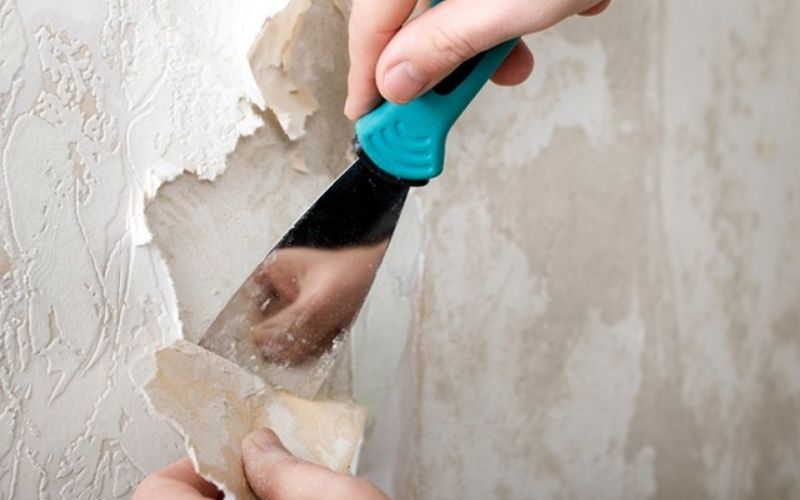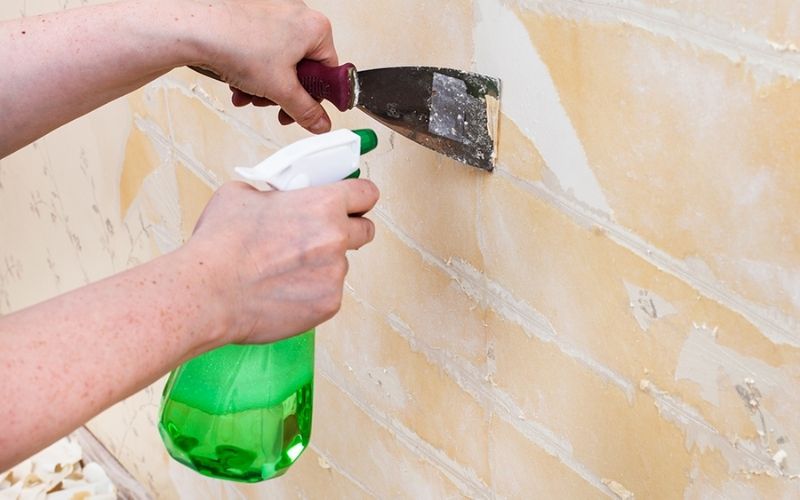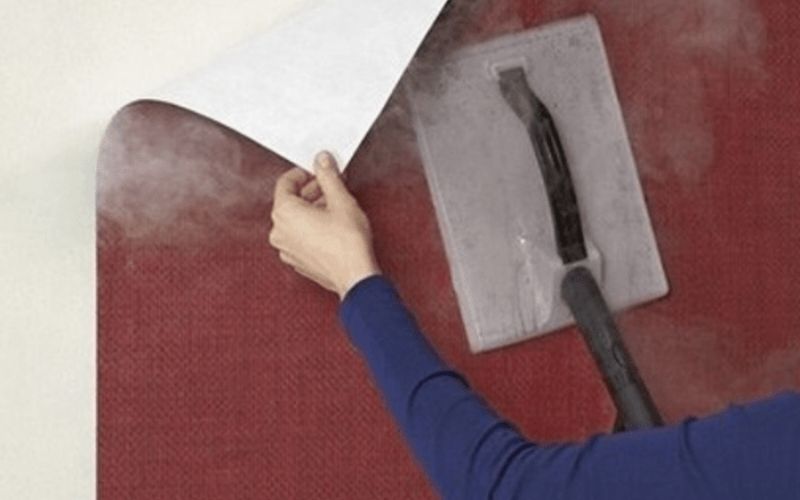Removing wallpaper can be a ‘challenging’ process for many people. If you don’t know the correct way to do it, removing the paper can leave behind old adhesive layers, which can look unsightly and even damage the paint on your walls.
So, we will guide you through the process of removing old wallpaper quickly and effectively in this article. Let’s get started!
1 Things to Consider Before Removing Wallpaper
Before you start removing wallpaper, you need to identify the type of wall you have. There are usually two types of walls:
– If your wall is made of old plaster, it’s better to replace the plasterboard. This is because, after removing the wallpaper, the protective wall layer will also come off, and it will be difficult to reuse the old wall.
– Removing wallpaper from old lime-sand walls can also be very challenging and labor-intensive.
Additionally, identifying the type of wallpaper you have is essential to choosing the most appropriate removal method.
- Strippable wallpaper (made of plastic or nylon) can be removed in one piece.

- Peelable wallpaper (not made of nylon or plastic) is like a cheap wallpaper; only the surface layer comes off, leaving a thin paper-like base layer behind.

2 How to Remove Wallpaper Quickly and Safely
Once you’ve identified the type of wallpaper and wall, you can use one of the following methods to remove the wallpaper.
Manual Wallpaper Removal Guide

If you have strippable wallpaper, start by prying off a corner of the paper and then carefully use a paper knife to peel it off. During this process, be gentle and take your time to avoid damaging the underlying wall surface.
For peelable wallpaper, especially on dry walls, be extra careful. When removing, if only the top layer of paper comes off while the thin paper layer and adhesive remain, continue peeling the top layer first. Then, remove the remaining adhesive layer.
Using a Paper Knife and Water to Remove Wallpaper

To remove non-strippable wallpaper, first, dampen the paper with warm water to make it easier to remove. To prevent paper scraps from falling on the floor, use a paint roller. Then, use a paper knife to scrape off any remaining paper.
Note: Don’t wet the paper over a large area if you can’t scrape it off within about 15 minutes. Also, don’t let water soak into the dry wall for too long, as it can damage it.
Removing Wallpaper with a Cleaning Solution

Tools you’ll need:
- Clean, old cloth
- Hot water
- Fabric softener
- Wallpaper roller
- Paper knife
- Putty knife
- Spray bottle (garden type)
Instructions:
Congratulations! You’ve successfully removed the wallpaper, and your wall is now clean and ready for a new look.
Using a Steam Machine to Remove Wallpaper

If the above methods don’t give you the desired results, you can try using a steam machine. However, be cautious if your wall is made of plasterboard.
Fill the steam machine with water and hold it in one position until the wallpaper softens. Then, move the machine to another position and start scraping the softened area with a utility knife.
Note: Steam and condensate from the machine can escape and cause burns. To prevent hot water from falling on your arms, wear rubber gloves and long-sleeved shirts.
3 Some Final Tips for Removing Wallpaper
– Organize the room by moving furniture and creating a spacious work area.
– For safety, turn off the power before starting work to prevent any electrical accidents.
– Remove and disconnect light fixtures and electrical devices from the wall to avoid damage and ensure your safety.
– Use tape to protect the wall from paper tears and prevent water from seeping into the paper, reducing the risk of fire.
– Be careful not to drop any materials or tools while removing the wallpaper.
That’s it! We’ve guided you through the process of quickly and effectively removing wallpaper. We hope you found this helpful and wish you success in your project.

































